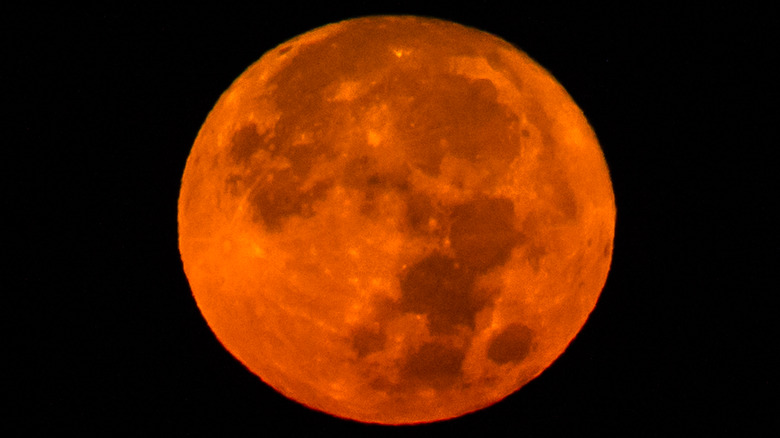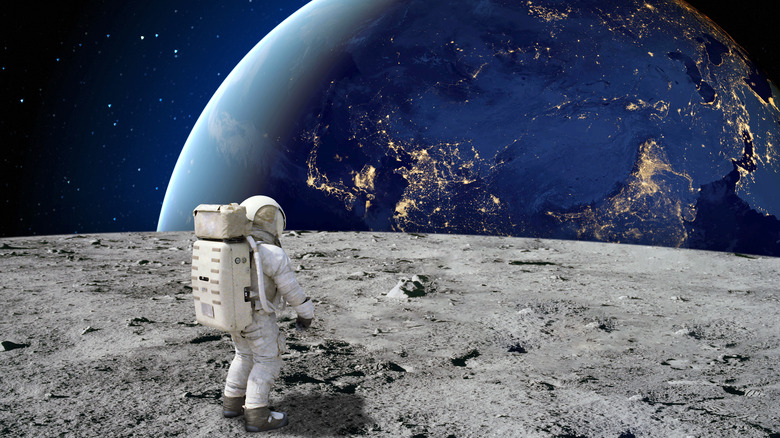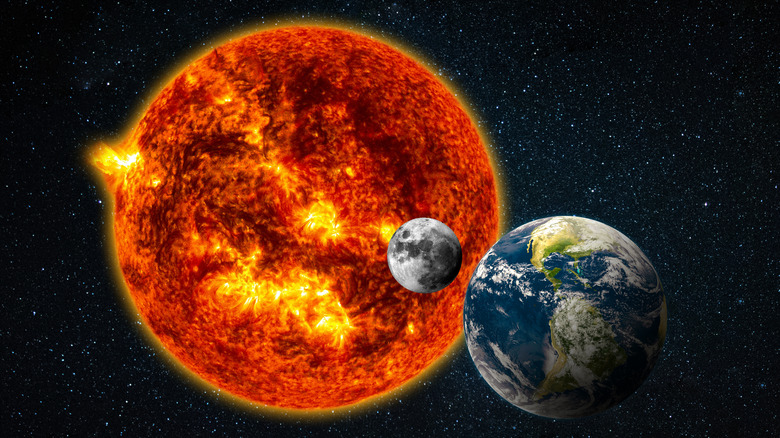Earth Is Playing A Crucial Role In Turning The Moon Permanently Red
Jupiter, the biggest planet, with its 79 moons, and Saturn, the second-largest planet, with its own 82 moons, have nearly 75% of over 200 moons orbiting several major and dwarf planets in the solar system, per NASA. Jupiter's four massive moons maintain the king of the planets' faint ring system (via The Planetary Society). According to NASA, Saturn's moons stabilize the planet's rings by orbiting in or near the rings. In addition, the Australian Academy of Science reports that at least two of Saturn's icy and Jupiter's planet-like moons have the potential to support life.
Though scientists have yet to find evidence of life beyond Earth, the Earth's moon holds the distinction of being the only celestial body visited by humans so far (via Live Science). Whether Earth's sole natural satellite and the brightest object in the sky after the sun can harbor life is still being explored, the moon is instrumental in helping sustain life on Earth by stabilizing its orbital axis and climate, per Space.com. So, while the moon is essential to Earth's functioning, is Earth returning the favor?
The moon has rust
Mars, or the Red Planet, is rich in iron. It has traces of brine water and oxygen, per USA Today. Rust is formed when the iron is exposed to oxygen and water. It is likely the reason Mars has a rusty surface (via Space.com). Since there is no clear evidence that the moon has oxygen, air, and water — necessary to sustain life as well as cause rust — the presence of rust on the lunar surface has come as a shock to scientists (via CNN).
When scientists analyzed the data from a NASA-designed instrument onboard the Indian Space Research Organisation's lunar spacecraft Chandrayaan-1, they found hematite, an oxidized iron mineral found on Earth's and Mars' surfaces. According to CNET, the moon's surface is replete with iron-rich rocks. But hematite or rust cannot be created in the absence of oxygen and water.
"At first, I totally didn't believe it. It shouldn't exist based on the conditions present on the Moon," said Abigail Fraeman, a planetary scientist at NASA's Jet Propulsion Laboratory. "But since we discovered water on the moon, people have been speculating that there could be a greater variety of minerals than we realize if that water had reacted with rocks."
Is it Earth's fault?
Absolutely. Much of the moon's 41%-45% oxygen is trapped inside the regolith — the top layer of rock — along with a number of minerals (via News18). Since it can not react with iron, the discovery suggests Earth may have a role to play.
According to Forbes, Earth is sending oxygen to the moon. During the full moon phase, when the moon enters and exits Earth's magnetic tail, oxygen from the Earth's upper atmosphere lands on the lunar surface, gets exposed to water molecules there, and creates rust (via NASA). At the same time, Earth blocks nearly 99% of the solar wind aimed at the hydrogen-rich moon, per Live Science. Solar winds carry hydrogen to the moon, making it harder for rust to form. So, when the solar wind is obstructed, the flow of hydrogen is blocked, and rust is formed.
"It turns out that the total oxygen delivered to the moon from Earth in 100 million years is sufficient to generate the hematite we see," Shuai Li, a researcher at the University of Hawaii's Institute of Geophysics and Planetology, told The Register. "The total oxygen is estimated from the observation by Japan's Kaguya mission. They observed that 1.5x1027 oxygen particles can be delivered to the lunar surface annually."


